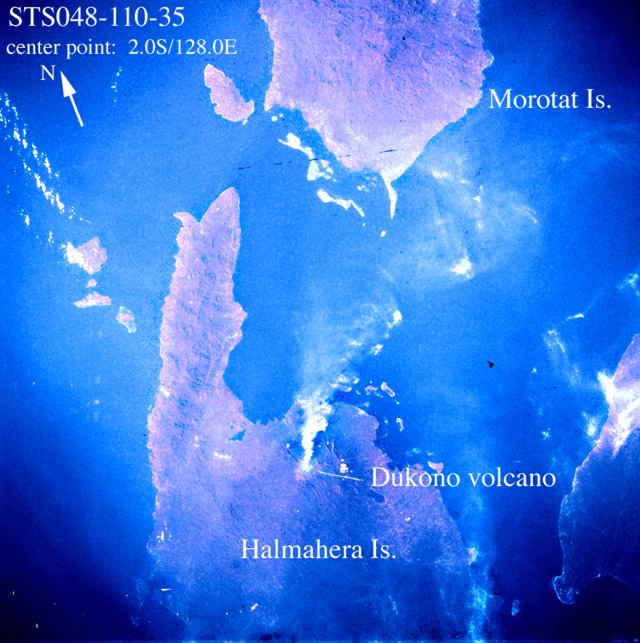Report on Dukono (Indonesia) — August 1991
Bulletin of the Global Volcanism Network, vol. 16, no. 8 (August 1991)
Managing Editor: Lindsay McClelland.
Dukono (Indonesia) Explosions and glow; ashfall to coast; small lahars
Please cite this report as:
Global Volcanism Program, 1991. Report on Dukono (Indonesia) (McClelland, L., ed.). Bulletin of the Global Volcanism Network, 16:8. Smithsonian Institution. https://doi.org/10.5479/si.GVP.BGVN199108-268010
Dukono
Indonesia
1.6992°N, 127.8783°E; summit elev. 1273 m
All times are local (unless otherwise noted)
People living near the volcano reported that a new eruption began during the night of 8-9 June, after nine years of relative quiet. At the onset of the eruption, residents were awakened by rumblings and a red glow from the volcano, which has since remained active. Ashfalls have occurred regularly in coastal towns 15 km NNW to 15 km ENE of the summit (Galela, Mamoya, and Tobelo). When visited by a geologist on 23-28 June, small to moderate explosions occurred every 4-5 minutes, sometimes accompanied by noise and night glow. Small lahars occurred in rivers draining the volcano.
Space Shuttle astronauts photographed an apparently ash-rich plume extending ~30 km from the summit to slightly beyond the coast on 15 September at 2156 (photos STS048-110-34 & 35). The entire summit area appeared ash-covered.
Geological Summary. Reports from this remote volcano in northernmost Halmahera are rare, but Dukono has been one of Indonesia's most active volcanoes. More-or-less continuous explosive eruptions, sometimes accompanied by lava flows, have occurred since 1933. During a major eruption in 1550 CE, a lava flow filled in the strait between Halmahera and the N-flank Gunung Mamuya cone. This complex volcano presents a broad, low profile with multiple summit peaks and overlapping craters. Malupang Wariang, 1 km SW of the summit crater complex, contains a 700 x 570 m crater that has also been active during historical time.
Information Contacts: V. Clavel and P. Vetsch, SVG, Switzerland; C. Evans, NASA-SSEOP.


